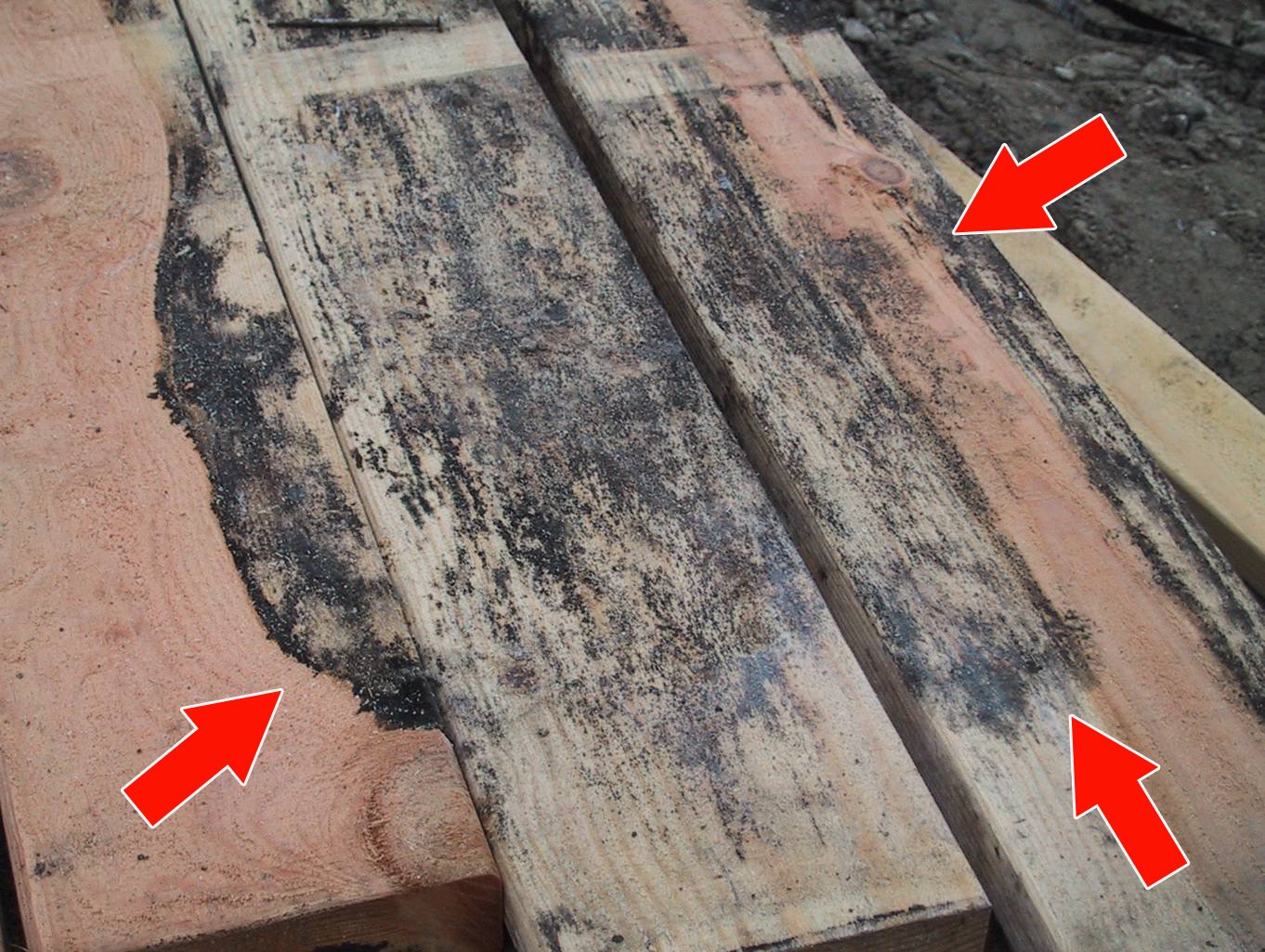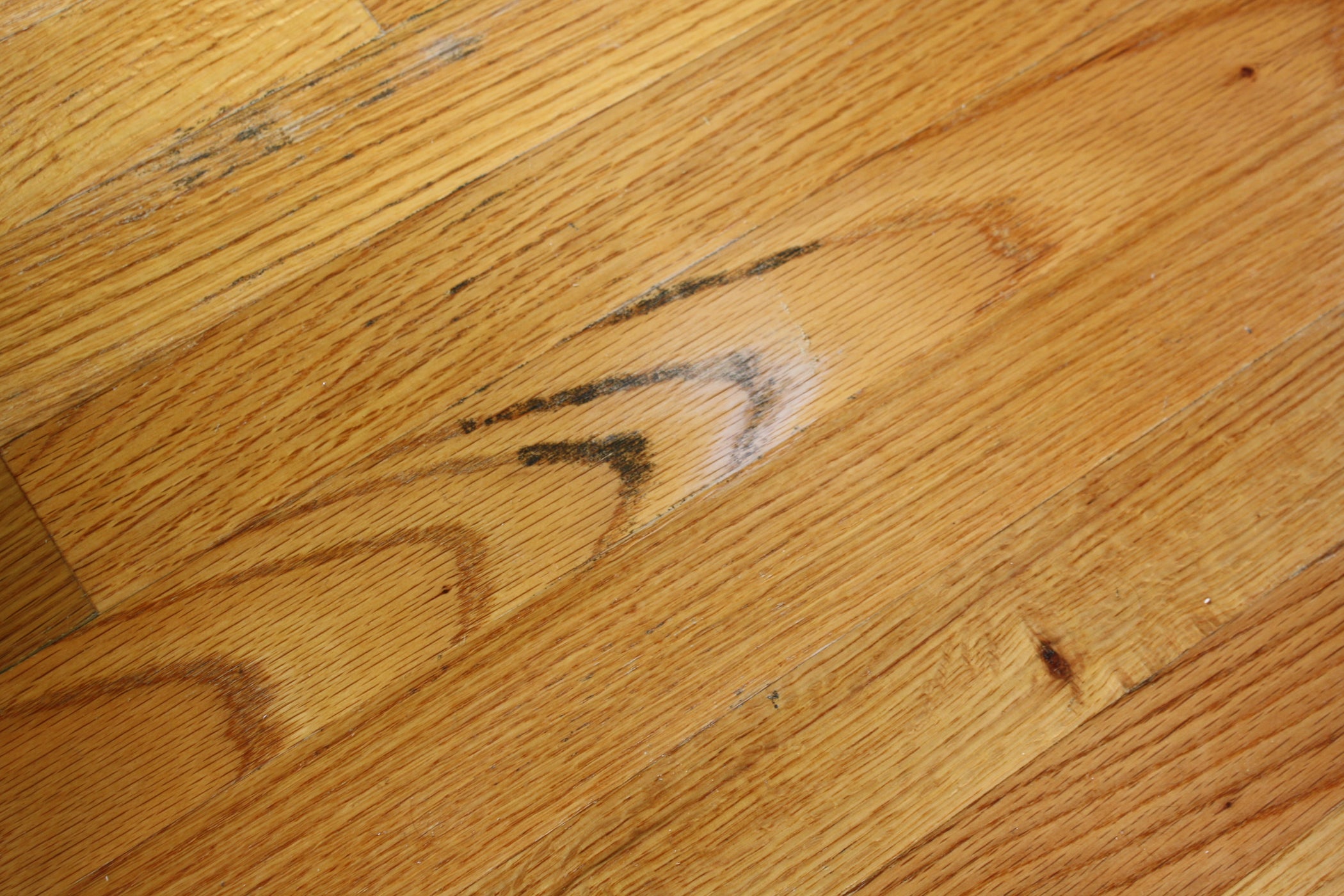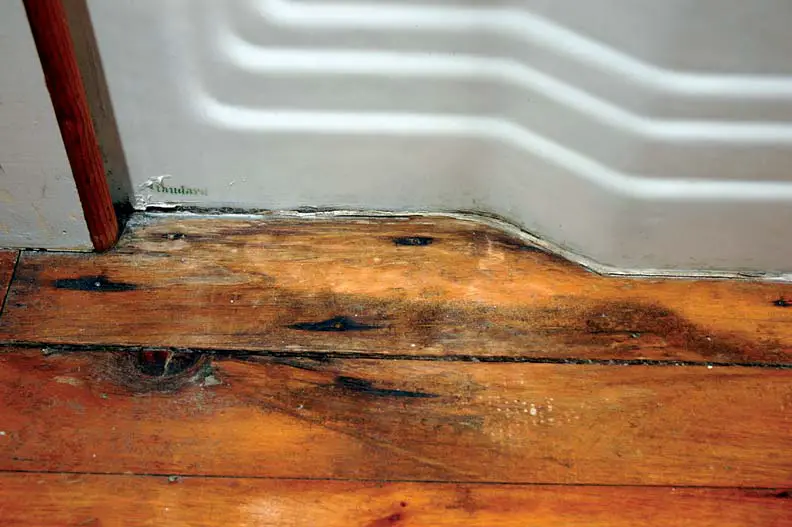Wear Personal Protection Gear When Removing Mold
The first step all professionals take in mold remediation is wearing proper protection equipment to avoid any negative health effects. This includes sneezing, coughing, itchy and watery eyes, breathing problems, etc. Wearing eye glasses, a breathing mask, gloves, and washable clothing will protect you from any harmful spores it releases during the cleaning process.
How To Prevent Mold Formation On Wood
Prevention is much more effective than treating wood furniture affected by mold.
To prevent any problems, heres what you should know:
- The furniture, but also any other wooden objects in the house must be kept permanently dry, in order not to create the environment conducive to mold development.
- In rooms with high humidity, use a dehumidifier. This will regulate the humidity level and prevent the formation of mold. Frequent ventilation of the rooms is also recommended.
- In case of a flood or any other incident that causes the wood furniture to damp, allow it to dry as quickly as possible.
- Dont forget to take care of the wooden furniture on the terrace or even in the backyard of the house, protecting them from the excessive humidity during the spring and autumn.
An effective way to protect wood surfaces is to apply a waterproofing solution.
S To Safely Remove Mold From Wood
Step 1: Take one cup of borax and mix with one gallon warm water and stir until dissolved.Step 2: Apply solution generously to mold affected areas. Wetting it helps keep the spores from becoming airborne. You may also use a spray bottle if easier.Step 3: Scrub with the brush to break loose any stubborn growthStep 4: Vacuum to remove the spores. This is important as even dead mold can still contain mycotoxins and cause allergic reactions.Step 5: Wipe area as clean as possible with ragStep 6: Repeat as needed.
Do not worry about leaving excess borax as it can actually help to prevent the mold from returning. It is also an effective insecticide.
Read Also: How To Stop Mold From Growing On Wood
Sanding / Planing The Wood
Untreated and unsealed wood is very porous and provides the perfect environment for mold to thrive, especially when damp. You might be asking how to remove black mold from wood, as black mold can root itself deep into the surface, and it can be difficult to remove by scrubbing with household chemicals. When all else fails, we can resort to sanding in order to remove mold from wood.
Use 100-grit sandpaper on the affected area of the wood, being careful not to dig too deeply into moldy areas. Using a sanding block or electric sander can help maintain an even surface. After removing the mold using sandpaper, one should let the wood dry out before sealing the wood with paint or varnish. Sealing the wood properly will prevent the mold from coming back.
Apply The Finish To The Wood Flooring

After all of the affected area has been completely removed and the new flooring has been installed, it will need a coat of wood finish that matches the original. If you cant find an exact match, use the lighter shade so you can darken it later. You can also add a coat of polyurethane finish for extra protection.
You May Like: Can Mold Survive Without Moisture
Remove From Wood Floors
As with hardwood, you may notice warping or staining from the affected areas. It can also seep through the wood, causing it to be deeper than it first seems.
You can then add an 8:1 ratio of diluted bleach and water. Spray on the area and allow it to sit for several minutes. Bleach will prevent further spreading and kill existing mold.
If it seems to have penetrated the wood, you can use a scraping tool or brush to match the depth of growth.
Apply Chlorine Bleach To Affected Area
As soon as the affected area is completely smooth, spray it with an 8:1 ratio of chlorine/bleach solution and allow it to sit for a few minutes. You can then use an old rag to wipe up the cleaner, fully removing any live mold still present.
- Keep in mind that mold can still be alive even though it looks like all areas have been cleaned.
- The cleaning solution will remove all leftover spores and prevent future mold growth.
Don’t Miss: How To Clean Mold Off Wood Cabinets
Best Ways To Remove Mold From Wood
Because black mold on wood can cause harmful health affects, is unsightly, and can potentially weaken wood structures, it is very important to remove it as soon as possible. Although black mold removal may seem daunting, the job can be completed with just a few steps. There are several techniques that can be used for to remove black mold from wood.
Remove From Vinyl Flooring
To remove a growth from vinyl flooring, mix 2 tablespoons of bleach into one quart of warm water in a spray bottle. Shake well. Apply it to the moldy surface on the vinyl flooring.
With gloves and mask on, you will want to dip a scrub brush into the solution to scrub away the surface mold on the vinyl area. You can towel dry when finished.
Rinse the floor to see if any residue remains on the vinyl. If not, you may now mop the floor and dry it very well.
Recommended Reading: How To Prevent Mold From Growing
How To Get Rid Of Black Mold On Wood
We consist of pictures of surface areas which have actually been cleaned up throughout a friendly mold removal task, and also we offer images of the impacts of usage of fungicidal sealers as encapsulants, fragment immobilizers, as well as clear surface area sealers.
The item in cleansing mold from a wood surface area is to get rid of all fungus product from the surface area of the wood: fungus spores, hyphae, as well as conidiophores . It is not required to eliminate all discolorations from wood.
Tiny exam of tarnished wood pieces will normally reveal that just what stays in these wood cells are sterilized fungus hyphae. If the wood surface area is cleaned up extensively and also creating leakages, high dampness, or various other water resources are protected against, maintaining the moisture at the correct degree, development of issue mold on the cleaned up surface areas is rather not likely.
The initial photo over programs mold expanding on wood mounting lumber as well as on electric circuitry shielding coats in a damp basement prior to these surface areas had actually been cleansed by the mold removal professional.
Remove From Concrete Floors
For concrete floors, commonly in basements or the garage, be sure to start by scrubbing the area with a broom to loosen up the moldy surface. Then, mix water and detergent that does not contain any ammonia ingredients. Pour it onto the floor and work the mix with a broom or scrub brush to ensure it is getting into all the grooves to help removal.
Fill a bucket with clean water. Begin to mop up the area of affected concrete. Once the area dries, you can visibly see how much mold is left on the concrete, if any. Next, you will add a water and bleach mixture to the concrete area. Allow it to sit and then rinse again.
The last measure is to add trisodium phosphate to your bleach mixture. Once you saturate the concrete area with this, it should kill any that remains. You can allow this to dry. This removal method should kill what exists and prevent any further outbreaks on the concrete. Read our full guide on how to remove black mold from concrete.
Read Also: How To Clean Mold Off Leather Furniture
Products For Removing Mold From Wood
There are numerous ways to get rid of mold from wood. You can either use eco-friendly, natural products or chemical products.
Different products are suitable for different types of wood. It depends on whether the wood has been painted or stained, making it non-porous, or if its unpainted and unstained, making it porous. On non-porous wood, mold remains on the surface, but if on porous wood, then the roots will be within the wood.
Take Note
Tools You Will Need To Remove Black Mold From Wood

- A protective face mask which will protect your mouth and your nose from inhaling or ingested the mold spores as you clean them
- You will need to put on some rubber gloves to protect your hands from the harsh chemicals that you will be using
- Safety goggles which will protect your eyes from mold spores getting into them as well as against the harsh chemicals
- A HEPA filter vacuum which will effectively remove the mold spores from your home
- A soft scrubbing brush
- Some sandpaper for removing any kind of leftover stain from the wood once you have eliminated the mold
- Unique cleaning product for black mold removal
You May Like: Can Mold Cause Lung Nodules
How To Kill Black Mold On Wood With Bleach
Bleach is a potent formula that can kill pretty much all the existing mold species, along with its spores. Additionally, it sanitizes the surface preventing future mold growth. But there is a little twist here. Bleach is not capable of penetrating into porous materials such as wood, so it can only kill the mold that is on top of the surface. Anything below it, wont be affected. This allows the roots of the black mold to stay alive and grow again soon. If you still want to use bleach this is what you need to do: Make a solution of one cup bleach and one-gallon water. Apply the solution to the moldy area with a spray bottle. Let it dry. You dont have to rinse or wipe the wood .
How To Remove Mold From Wood Cabinets
First, check whether you can dismantle the affected wood. Look out for other affected areas in the cabinets. Second, ensure that you have a supply of vinegar and make sure that you have protective clothing. Clear everything in the cabinets and take it outside. Spray the vinegar onto the mold and let it soak in for an hour. Scrub the affected areas with a brush and other cleaning products to break the mold. Finish, rinse and wipe with warm water and allow the wood to dry.
Read Also: How To Remove Mold From Ceiling
Types Of Mold On Wood
There are a lot of different kinds of mold that exist but not all of them are equally common. Luckily, the 3 most common ones can be recognized by their color. In this section, well take a quick look at black mold, white mold, and green mold.
There are big differences between the different types of molds, so it is important that you learn to tell the difference to know the severity of the problem.
What To Do If Mold Persists
If the mold stains still remain, the wood surface will need to be sanded to remove the spores that have deeply penetrated the wood. If you are not familiar with wood sanding or refinishing, ask questions at a home improvement store about the right sandpaper grit to use for your situation.
After sanding and vacuuming away all of the grit, the wood should be refinished or sealed to help prevent future damage.
The Spruce / Georgia Lloyd
You May Like: How Does Mold Make You Sick Symptoms
How To Get Rid Of Mold On Wood Method # 2
Using a cloth and chemical solution is effective at removing mold from wood when the mold is simply sitting on the surface however, method number one is not effective when the mold appears to have penetrated deep within the floor boards.
Follow the steps below when the mold has grown deeper into the surface of your floors.
Should you suspect that you have a mold problem in your home beyond just a small amount, its crucial to take this very seriously. Mold spores can be very hazardous to your health when left untreated.
Protecting Yourself While Cleaning Moldy Surfaces
When cleaning mold from any surface, wear protective gear to keep yourself safe. Wear a respirator or air mask of some sort during mold removal to prevent mold spores from entering your lungs. Safety goggles and rubber gloves need to be worn at all times when cleaning up the mold to protect you from certain cleaning products, as well as mold spores.
If using bleach, wear protective outer clothing or old clothes as the bleach may cause stains. To remove mold from a large area like one that has a strong, musty smell, or one with extensive water damage, you not only want to wear protective gear, but you also want to take a few extra precautions.
These extra precautions prevent the mold from spreading throughout the rest of the house and will protect you from breathing in the spores and fumes from cleaning products you are using. Use an old box fan to ventilate the area you will be throwing it away when done as the spores are impossible to clean off the fan.
Moisten moldy areas while working, turn off furnaces and air conditioners while working, cover ducts and vents, and always leave your wet/dry vacuum outside double-bag and tape all moldy materials before throwing them in the trash.
Recommended Reading: What Can Happen If You Breathe In Black Mold
Choose Appropriate Mold And Mildew Cleaner
Choosing the appropriate cleaner is the next most important step in the remediation process because you will want to apply a chemical that will remove the fungus completely, not just irritate. For surface mold, you can use a chlorine bleach solution with a 10:1 water/bleach ratio from your local hardware store.
How To Kill Black Mold With Hydrogen Peroxide

Hydrogen Peroxide is a non-toxic antifungal and antibacterial solution that eliminates and prevents black mold especially black mold growth on wood. To kill mold with hydrogen peroxide, you will need to prepare a solution of 3% hydrogen peroxide concentration and clean water in a spray bottle. Shake it thoroughly and then spray the moldy area with the solution. Let it sit for 10 minutes and then scrub the surface with a brush. Once you removed all the mold stains, wipe down the wood with a wet towel.
You May Like: How To Remove Mold From Garden Hose
Why Does Black Mold On Floors Grow
It can be tricky to find, as it can grow on subflooring and joists. This means it can grow under carpets, tiles and other types of flooring which can be difficult to spot. It requires a moist environment to grow and thrive, thus it will be in areas that experience moisture. This can include kitchens and bathrooms.
Since it grows from spores, once inside of your home, these spores gravitate toward these naturally damp areas. After they have established a favorable area to grow, it can then spread. Spores are tiny, airborne reproductive cells that mimic the function of seeds. If they are stirred up, they can travel to other areas.
How To Remove Mold From Wood: Step
by Action 911 | Sep 24, 2021 | Mold Damage, Water Damage |
Mold is a fungus, and it grows on food, cardboard, wood products, and other organic matter. It thrives in moist, warm conditions and grows on a damp surface within 24 to 48 hours. It will continue to grow until moisture is reduced and the mold is eliminated. Mold is unpleasant it is ugly, making surfaces and walls look dirty and dingy and smelly, creating a musty odor. Most importantly, mold can be dangerous. There are a few molds that can cause serious health problems. But any mold in high concentration can adversely affect human health, making it critical to know how to remove mold from wood. Once those mold-infested areas are disturbed, more harmful spores are released into the air. Bottom line watch for it, eliminate it quickly, and take steps to prevent it.
Read Also: How To Clean Mold From Brick
Black Mold On Wooden Floors
Black mold manifests itself in the form of black spots. If you have wooden floors, you probably should be on the lookout for these toxic and damaging fungi. When your wooden floor comes into contact with moisture, it creates an excellent breeding ground for fungi growth. It does not only stain the floors but also growths beneath the surface and causes wood discoloration, rot, and warp. Immediate attention is paramount to prevent extensive damage and kill the black mold. Take a look at our in-depth guide to remove mold from floors.
